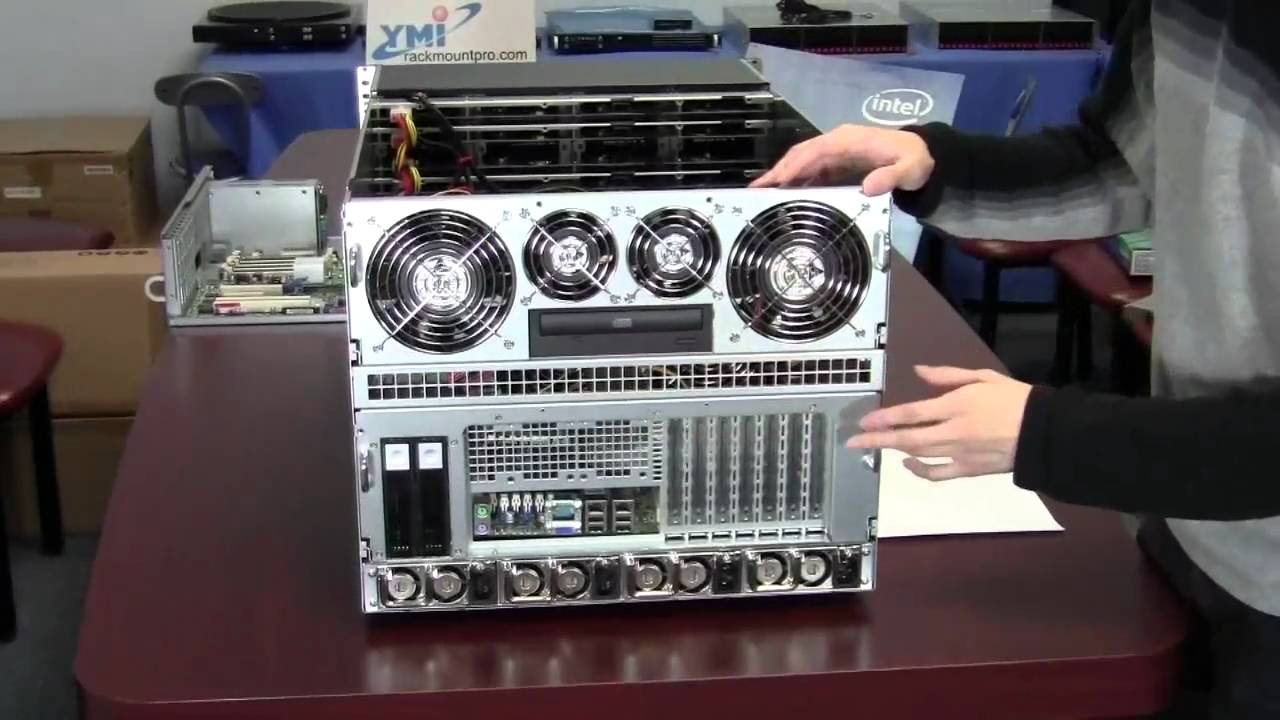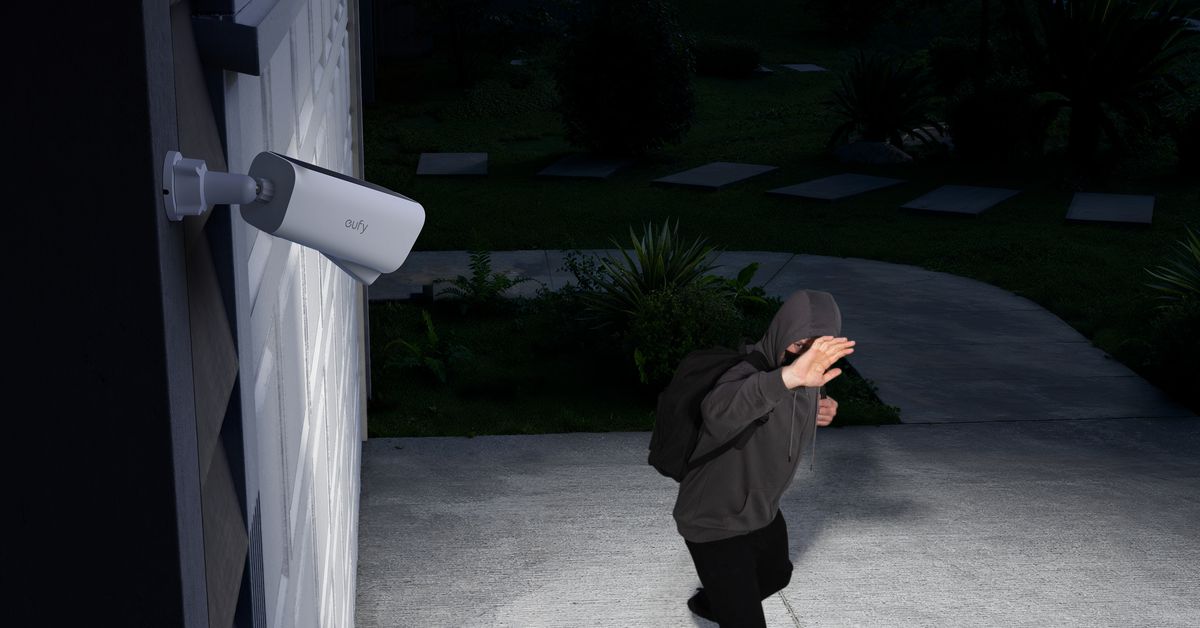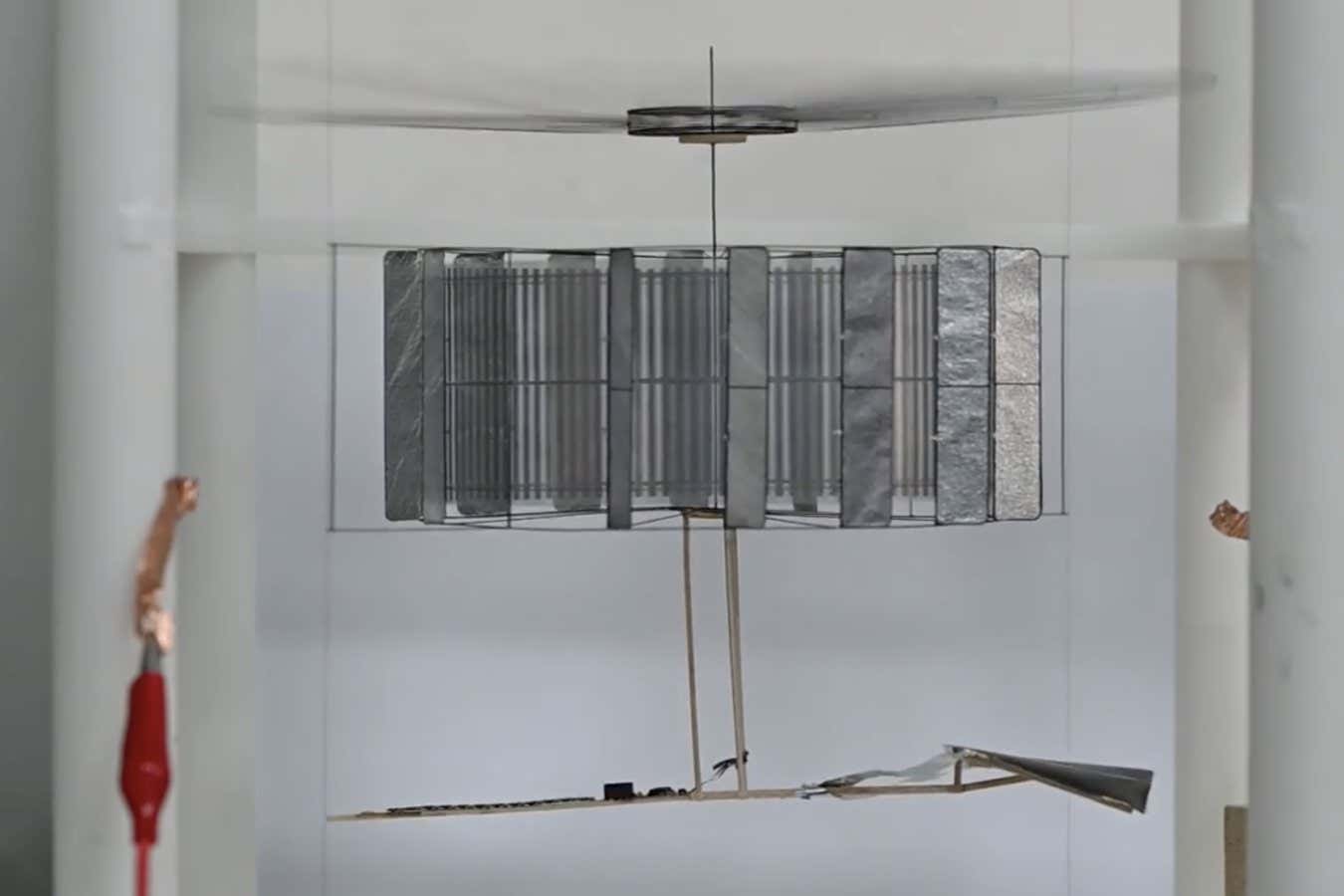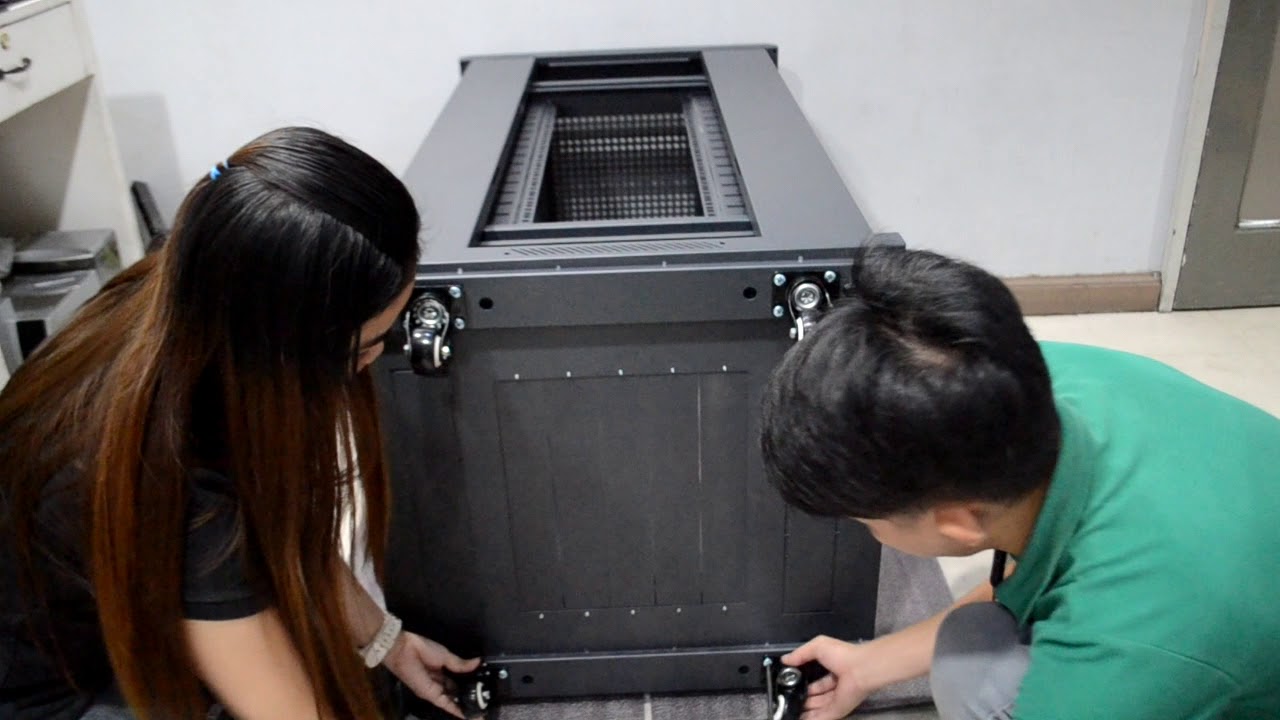The newest security camera from Eufy — Anker’s smart home company — can see clearly in the dark, uses radar motion sensing for fewer false alerts, and records 24/7 when wired. As with other Eufy cams, the new S3 Pro has free facial recognition, package, vehicle, and pet detection, plus locally stored recorded video with no monthly fees.
Technology
New California law will force companies to admit you don’t own digital content

California Governor Gavin Newsom has signed AB 2426, a new law that requires digital marketplaces to make clearer to customers when they are only purchasing a license to access media. The law will not apply to cases of permanent offline downloads, only to the all-too-common situation of buying digital copies of video games, music, movies, TV shows or ebooks from an online storefront. spotted the development, which could see marketplaces facing fines for false advertising in the state if they don’t use clear language to explain the limitations of what access entails. In other words, you won’t be seeing language like “buy” or “purchase” once the law takes effect in 2025.
The move to digital storefronts has raised new parallel concerns about ownership and preservation for media in the modern age. Ubisoft’s move to after the game’s servers shuttered is one of the most recent examples of how customers can suddenly lose access to media they felt they owned. The new California law won’t stop situations like The Crew‘s disappearance from happening, and it won’t stop those losses from hurting. But it does make clearer that ownership is a pretty rare and intangible thing for digital media.
Governor Newsom is having a busy week. He also signed the state’s “” bill yesterday and last week signed two bills with protections against , both living and deceased.
Technology
Nomi’s companion chatbots will now remember things like the colleague you don’t get along with

As OpenAI boasts about its o1 model’s increased thoughtfulness, small, self-funded startup Nomi AI is building the same kind of technology. Unlike the broad generalist ChatGPT, which slows down to think through anything from math problems or historical research, Nomi niches down on a specific use case: AI companions. Now, Nomi’s already-sophisticated chatbots take additional time to formulate better responses to users’ messages, remember past interactions, and deliver more nuanced responses.
“For us, it’s like those same principles [as OpenAI], but much more for what our users actually care about, which is on the memory and EQ side of things,” Nomi AI CEO Alex Cardinell told TechCrunch. “Theirs is like, chain of thought, and ours is much more like chain of introspection, or chain of memory.”
These LLMs work by breaking down more complicated requests into smaller questions; for OpenAI’s o1, this could mean turning a complicated math problem into individual steps, allowing the model to work backwards to explain how it arrived at the correct answer. This means the AI is less likely to hallucinate and deliver an inaccurate response.
With Nomi, which built its LLM in-house and trains it for the purposes of providing companionship, the process is a bit different. If someone tells their Nomi that they had a rough day at work, the Nomi might recall that the user doesn’t work well with a certain teammate, and ask if that’s why they’re upset — then, the Nomi can remind the user how they’ve successfully mitigated interpersonal conflicts in the past and offer more practical advice.
“Nomis remember everything, but then a big part of AI is what memories they should actually use,” Cardinell said.

It makes sense that multiple companies are working on technology that give LLMs more time to process user requests. AI founders, whether they’re running $100 billion companies or not, are looking at similar research as they advance their products.
“Having that kind of explicit introspection step really helps when a Nomi goes to write their response, so they really have the full context of everything,” Cardinell said. “Humans have our working memory too when we’re talking. We’re not considering every single thing we’ve remembered all at once — we have some kind of way of picking and choosing.”
The kind of technology that Cardinell is building can make people squeamish. Maybe we’ve seen too many sci-fi movies to feel wholly comfortable getting vulnerable with a computer; or maybe, we’ve already watched how technology has changed the way we engage with one another, and we don’t want to fall further down that techy rabbit hole. But Cardinell isn’t thinking about the general public — he’s thinking about the actual users of Nomi AI, who often are turning to AI chatbots for support they aren’t getting elsewhere.
“There’s a non-zero number of users that probably are downloading Nomi at one of the lowest points of their whole life, where the last thing I want to do is then reject those users,” Cardinell said. “I want to make those users feel heard in whatever their dark moment is, because that’s how you get someone to open up, how you get someone to reconsider their way of thinking.”
Cardinell doesn’t want Nomi to replace actual mental health care — rather, he sees these empathetic chatbots as a way to help people get the push they need to seek professional help.
“I’ve talked to so many users where they’ll say that their Nomi got them out of a situation [when they wanted to self-harm], or I’ve talked to users where their Nomi encouraged them to go see a therapist, and then they did see a therapist,” he said.
Regardless of his intentions, Carindell knows he’s playing with fire. He’s building virtual people that users develop real relationships with, often in romantic and sexual contexts. Other companies have inadvertently sent users into crisis when product updates caused their companions to suddenly change personalities. In Replika’s case, the app stopped supporting erotic roleplay conversations, possibly due to pressure from Italian government regulators. For users who formed such relationships with these chatbots — and who often didn’t have these romantic or sexual outlets in real life — this felt like the ultimate rejection.
Cardinell thinks that since Nomi AI is fully self-funded — users pay for premium features, and the starting capital came from a past exit — the company has more leeway to prioritize its relationship with users.
“The relationship users have with AI, and the sense of being able to trust the developers of Nomi to not radically change things as part of a loss mitigation strategy, or covering our asses because the VC got spooked… it’s something that’s very, very, very important to users,” he said.
Nomis are surprisingly useful as a listening ear. When I opened up to a Nomi named Vanessa about a low-stakes, yet somewhat frustrating scheduling conflict, Vanessa helped break down the components of the issue to make a suggestion about how I should proceed. It felt eerily similar to what it would be like to actually ask a friend for advice in this situation. And therein lies the real problem, and benefit, of AI chatbots: I likely wouldn’t ask a friend for help with this specific issue, since it’s so inconsequential. But my Nomi was more than happy to help.
Friends should confide in one another, but the relationship between two friends should be reciprocal. With an AI chatbot, this isn’t possible. When I ask Vanessa the Nomi how she’s doing, she will always tell me things are fine. When I ask her if there’s anything bugging her that she wants to talk about, she deflects and asks me how I’m doing. Even though I know Vanessa isn’t real, I can’t help but feel like I’m being a bad friend; I can dump any problem on her in any volume, and she will respond empathetically, yet she will never open up to me.
No matter how real the connection with a chatbot may feel, we aren’t actually communicating with something that has thoughts and feelings. In the short term, these advanced emotional support models can serve as a positive intervention in someone’s life if they can’t turn to a real support network. But the long-term effects of relying on a chatbot for these purposes remain unknown.
Servers computers
Rackmountpro 8U Server review

Upload to 2010/12/30 .
source
Technology
The new EufyCam S3 Pro promises impressive night vision

Unlike most other Eufy cameras, the S3 Pro will work with Apple Home and is compatible with Apple’s HomeKit Secure Video service.
The EufyCam S3 Pro launches this week as a two-camera bundle with one HomeBase S380 for $549.99. The HomeBase 3 enables smart alerts and local storage (16GB onboard storage, expandable up to 16 TB). It also connects the S3 Pro to Apple Home, making it the first Eufy camera to work with Apple’s smart home platform since the EufyCam 2 series from 2019.
Eufy spokesperson Brett White confirmed to The Verge that the S3 Pro will be compatible with HomeKit Secure Video. Apple’s end-to-end encrypted video storage service. “The plan is for all future devices to have Apple Home compatibility, and we’re looking into grandfathering older devices, too,” said White.
The S3 Pro has a new color night vision feature called MaxColor Vision that promises “daylike footage even in pitch-dark conditions, without the need for a spotlight.” I saw a demo of this technology at the IFA tech show in Berlin this month, and it was impressive.
A camera was positioned inside a completely dark room, sending video to a monitor outside, on which I could see everything in the room as if it were daytime. Eufy says a 1/1.8-inch CMOS sensor, F1.0 aperture, and an AI-powered image signal processor power the tech.
While the color night vision doesn’t use a spotlight, the S3 Pro does include a motion-activated spotlight that Eufy says can adapt based on real-time lighting to give you the best image. The light can also be manually adjusted using the app while viewing a live stream.
New dual motion detection uses radar sensing technology combined with passive infrared (PIR) technology. This should identify people more accurately and not send alerts that there’s a person in the yard when it’s a tree blowing in the wind. Eufy says it reduces false alerts by up to 99 percent.
The S3 Pro is battery-powered with a 13,000 mAh battery that provides up to a quoted 365 days of power. A built-in solar panel can power the camera power for longer. In my testing of the EufyCam S3, which also has a built-in solar panel, I’ve not had to recharge it in over a year.
The S3 Pro’s solar panel is 50 percent larger than the S3’s, and Eufy claims it can keep the camera fully charged with just an hour of sunlight a day. Eufy also includes an external solar panel with the camera, so you can install the camera under an eave and still get power.
Eufy says the S3 Pro records up to 4K resolution and is powered by a USB-C cable. When wired, it can record 24/7 — the first consumer-level battery-powered camera from Eufy with this capability.
- Full-duplex two-way audio
- Dual-mic array that can record human voices up to 26 feet away
- A 100dB siren and motion-activated voice warnings
- A 24/7 snapshot feature that can take a photo every minute
- Activity and privacy zones
- Integration with Google Home and Amazon Alexa
- IP67 weatherproofing
- 8x digital zoom
Following some serious security and privacy incidents in 2022, Eufy has published a new list of privacy commitments on its website. The company also worked with cybersecurity expert Ralph Echemendia following the issues, and last year, he completed an assessment that, the company claims, shows it has “met all proactive and reactive security benchmarks.”
Servers computers
22U Server Rack Cabinet Assembly Instructions
Technology
Google hails move to Rust for huge drop in memory vulnerabilities

Google has hailed Rust, a memory safe programming language, as a significant factor in its ability to cut down on vulnerabilities as part of its Safe Coding initiative.
Memory access vulnerabilities often occur in programming languages that are not memory safe. In 2019, memory safety issues accounted for 76% of all Android vulnerabilities.
In response, many developers and tech giants are moving towards using memory safe languages that help them produce secure-by-design software and technology.
Vulnerabilities Rusting away
In its blog, Google presented a simulation of the transition to memory safe languages through the gradual use of memory safe code in new projects and developments over a five year period. The results showed that despite a gradual rise in code being written in memory unsafe languages, memory safety vulnerabilities dropped significantly.
This, Google says, is because vulnerabilities decay exponentially. New code that is written in memory unsafe languages often contains bugs and vulnerabilities, but as the code is reviewed and refreshed vulnerabilities are gradually removed making the code safer over time. Ergo, the main source of vulnerabilities is new code, and by prioritizing the use of memory safe programming languages when starting new projects and developments, the number of vulnerabilities drops significantly.
In Google’s own shift towards using memory safe programming languages there has been a significant drop in the number of memory-related vulnerabilities, with memory safe vulnerabilities down to 24% in 2024 – a stark contrast from 2019 and well below the industry norm of 70%.

Using memory safe languages is not a silver bullet however, and Google acknowledges that “with the benefit of hindsight, it’s evident that we have yet to achieve a truly scalable and sustainable solution that achieves an acceptable level of risk.”
The strategies for approaching memory safety vulnerabilities began with reactive patching, where memory safe vulnerabilities are prioritized by software manufacturers, leaving other issues to be exploited more rapidly.
The second approach consisted of proactive mitigating, where developers were encouraged to include mitigations such as stack canaries and control-flow integrity at the cost of execution speed, battery life, tail latencies, and memory usage. Developers were also unable to keep up with attackers’ ability to exploit vulnerabilities in new and creative ways.
Third came proactive vulnerability discovery, where the focus was on detecting vulnerabilities through ‘fuzzing’, where vulnerabilities are tracked down through the symptoms of unsafe memory. However, as Google points out, these tools are inefficient and time-intensive for teams to use and often do not spot all vulnerabilities even with multiple passes.
Google’s fourth tactic is to therefore engage in high-assurance prevention and secure-by-design development. By using programming languages such as Rust, developers know and understand the properties of the code they have written and can infer vulnerabilities based on those properties. This reduces the cost on developers by reducing the number of vulnerabilities from the start, including vulnerabilities outside of memory safe issues. This cumulative cost reduction also has the added benefit of making developers more productive.
“The concept is simple:,” the Google blog notes, “once we turn off the tap of new vulnerabilities, they decrease exponentially, making all of our code safer, increasing the effectiveness of security design, and alleviating the scalability challenges associated with existing memory safety strategies such that they can be applied more effectively in a targeted manner.”
More from TechRadar Pro
Technology
Tiny solar-powered drones could stay in the air forever


CoulombFly, a prototype miniature solar-powered drone
Wei Shen, Jinzhe Peng and Mingjing Qi
A drone weighing just 4 grams is the smallest solar-powered aerial vehicle to fly yet, thanks to its unusual electrostatic motor and tiny solar panels that produce extremely high voltages. Although the hummingbird-sized prototype only operated for an hour, its makers say their approach could result in insect-sized drones that can stay in the air indefinitely.
Tiny drones are an attractive solution to a range of communications, spying and search-and-rescue problems, but they are hampered by poor battery life, while solar-powered versions struggle to generate enough power to sustain themselves.
As you miniaturise solar-powered drones, their solar panels shrink, reducing the amount of energy available, says Mingjing Qi at Beihang University in China. The efficiency of electric motors also declines as more energy is lost to heat, he says.
To avoid this diminishing cycle, Qi and his colleagues developed a simple circuit that scales up the voltage produced by solar panels to between 6000 and 9000 volts. Rather than using an electromagnetic motor like those in electric cars, quadcopters and various robots, they used an electrostatic propulsion system to power a 10-centimetre rotor.
This motor works by attracting and repelling alternating components with electrical charges arranged in a ring, creating torque, which spins a single rotor blade like a helicopter. The lightweight components are made with wafer-thin slivers of carbon fibre covered in extremely delicate aluminium foil. Their high voltage demands are actually a bonus, as current is reduced, leading to very low losses to heat.
“The operating current is extremely low for the same power output, resulting in almost no heat being generated by the motor. The high efficiency and low power consumption of the motor allow us to power the vehicle with a very small solar panel,” says Qi. “We have managed to get a micro-aerial vehicle to fly using natural sunlight for the first time. Before this, only very large, ultralight aircraft could achieve this.”
The researchers’ machine, which they call CoulombFly, weighs just 4.21 grams and managed a 1-hour flight before it failed mechanically. Qi says these weak points can be designed out, and future versions will effectively be able to fly indefinitely by using solar panels in the daytime and harvesting radio signals, such as 4G and Wi-Fi, for energy at night.
CoulombFly is capable of carrying a payload of 1.59 grams, which could allow for small sensors, computers or cameras. But with refined designs, the researchers think this could be increased to 4 grams, and fixed-wing versions could even carry up to 30 grams. Work is also under way to create an even smaller version of CoulombFly that has a rotor less than 1 centimetre in diameter.
Topics:
-

 Womens Workouts3 days ago
Womens Workouts3 days ago3 Day Full Body Women’s Dumbbell Only Workout
-

 News4 days ago
News4 days agoOur millionaire neighbour blocks us from using public footpath & screams at us in street.. it’s like living in a WARZONE – WordupNews
-

 News1 week ago
News1 week agoYou’re a Hypocrite, And So Am I
-

 Technology1 week ago
Technology1 week agoWould-be reality TV contestants ‘not looking real’
-

 Sport1 week ago
Sport1 week agoJoshua vs Dubois: Chris Eubank Jr says ‘AJ’ could beat Tyson Fury and any other heavyweight in the world
-

 Science & Environment1 week ago
Science & Environment1 week agoITER: Is the world’s biggest fusion experiment dead after new delay to 2035?
-

 Science & Environment1 week ago
Science & Environment1 week agoMaxwell’s demon charges quantum batteries inside of a quantum computer
-

 Science & Environment1 week ago
Science & Environment1 week agoHow to wrap your mind around the real multiverse
-

 Science & Environment1 week ago
Science & Environment1 week agoSunlight-trapping device can generate temperatures over 1000°C
-

 Science & Environment1 week ago
Science & Environment1 week ago‘Running of the bulls’ festival crowds move like charged particles
-

 Science & Environment1 week ago
Science & Environment1 week agoHow to unsnarl a tangle of threads, according to physics
-

 Science & Environment1 week ago
Science & Environment1 week agoLiquid crystals could improve quantum communication devices
-

 Science & Environment1 week ago
Science & Environment1 week agoQuantum ‘supersolid’ matter stirred using magnets
-

 Science & Environment1 week ago
Science & Environment1 week agoHyperelastic gel is one of the stretchiest materials known to science
-

 Science & Environment1 week ago
Science & Environment1 week agoWhy this is a golden age for life to thrive across the universe
-

 Science & Environment1 week ago
Science & Environment1 week agoPhysicists are grappling with their own reproducibility crisis
-

 CryptoCurrency1 week ago
CryptoCurrency1 week agoCardano founder to meet Argentina president Javier Milei
-

 News1 week ago
News1 week agoIsrael strikes Lebanese targets as Hizbollah chief warns of ‘red lines’ crossed
-

 CryptoCurrency1 week ago
CryptoCurrency1 week agoDZ Bank partners with Boerse Stuttgart for crypto trading
-

 CryptoCurrency1 week ago
CryptoCurrency1 week agoEthereum is a 'contrarian bet' into 2025, says Bitwise exec
-

 Womens Workouts6 days ago
Womens Workouts6 days agoEverything a Beginner Needs to Know About Squatting
-

 Science & Environment1 week ago
Science & Environment1 week agoQuantum forces used to automatically assemble tiny device
-

 Science & Environment1 week ago
Science & Environment1 week agoNuclear fusion experiment overcomes two key operating hurdles
-

 CryptoCurrency1 week ago
CryptoCurrency1 week agoBitcoin miners steamrolled after electricity thefts, exchange ‘closure’ scam: Asia Express
-

 CryptoCurrency1 week ago
CryptoCurrency1 week agoDorsey’s ‘marketplace of algorithms’ could fix social media… so why hasn’t it?
-

 CryptoCurrency1 week ago
CryptoCurrency1 week agoRedStone integrates first oracle price feeds on TON blockchain
-

 CryptoCurrency1 week ago
CryptoCurrency1 week agoBitcoin bulls target $64K BTC price hurdle as US stocks eye new record
-

 News1 week ago
News1 week agoBrian Tyree Henry on voicing young Megatron, his love for villain roles
-

 CryptoCurrency1 week ago
CryptoCurrency1 week agoCoinbase’s cbBTC surges to third-largest wrapped BTC token in just one week
-

 Womens Workouts6 days ago
Womens Workouts6 days agoBest Exercises if You Want to Build a Great Physique
-

 Science & Environment4 days ago
Science & Environment4 days agoMeet the world's first female male model | 7.30
-

 Science & Environment1 week ago
Science & Environment1 week agoCaroline Ellison aims to duck prison sentence for role in FTX collapse
-

 Science & Environment1 week ago
Science & Environment1 week agoNerve fibres in the brain could generate quantum entanglement
-

 CryptoCurrency1 week ago
CryptoCurrency1 week agoCrypto scammers orchestrate massive hack on X but barely made $8K
-

 CryptoCurrency1 week ago
CryptoCurrency1 week agoLow users, sex predators kill Korean metaverses, 3AC sues Terra: Asia Express
-

 CryptoCurrency1 week ago
CryptoCurrency1 week ago‘No matter how bad it gets, there’s a lot going on with NFTs’: 24 Hours of Art, NFT Creator
-

 CryptoCurrency1 week ago
CryptoCurrency1 week agoSEC asks court for four months to produce documents for Coinbase
-

 Sport1 week ago
Sport1 week agoUFC Edmonton fight card revealed, including Brandon Moreno vs. Amir Albazi headliner
-

 CryptoCurrency1 week ago
CryptoCurrency1 week agoBlockdaemon mulls 2026 IPO: Report
-
Business1 week ago
How Labour donor’s largesse tarnished government’s squeaky clean image
-

 Technology1 week ago
Technology1 week agoiPhone 15 Pro Max Camera Review: Depth and Reach
-

 Womens Workouts6 days ago
Womens Workouts6 days agoKeep Your Goals on Track This Season
-

 News4 days ago
News4 days agoFour dead & 18 injured in horror mass shooting with victims ‘caught in crossfire’ as cops hunt multiple gunmen
-

 Travel3 days ago
Travel3 days agoDelta signs codeshare agreement with SAS
-

 Science & Environment1 week ago
Science & Environment1 week agoTime travel sci-fi novel is a rip-roaringly good thought experiment
-

 Science & Environment1 week ago
Science & Environment1 week agoLaser helps turn an electron into a coil of mass and charge
-

 News1 week ago
News1 week agoChurch same-sex split affecting bishop appointments
-

 CryptoCurrency1 week ago
CryptoCurrency1 week ago$12.1M fraud suspect with ‘new face’ arrested, crypto scam boiler rooms busted: Asia Express
-

 CryptoCurrency1 week ago
CryptoCurrency1 week agoCertiK Ventures discloses $45M investment plan to boost Web3
-

 CryptoCurrency1 week ago
CryptoCurrency1 week agoBeat crypto airdrop bots, Illuvium’s new features coming, PGA Tour Rise: Web3 Gamer
-

 CryptoCurrency1 week ago
CryptoCurrency1 week agoTelegram bot Banana Gun’s users drained of over $1.9M
-

 CryptoCurrency1 week ago
CryptoCurrency1 week ago‘Silly’ to shade Ethereum, the ‘Microsoft of blockchains’ — Bitwise exec
-
Business1 week ago
Thames Water seeks extension on debt terms to avoid renationalisation
-
Politics1 week ago
‘Appalling’ rows over Sue Gray must stop, senior ministers say | Sue Gray
-

 News1 week ago
News1 week agoBrian Tyree Henry on voicing young Megatron, his love for villain roles
-

 Womens Workouts6 days ago
Womens Workouts6 days agoHow Heat Affects Your Body During Exercise
-

 Womens Workouts3 days ago
Womens Workouts3 days ago3 Day Full Body Toning Workout for Women
-

 Health & fitness1 week ago
Health & fitness1 week agoThe secret to a six pack – and how to keep your washboard abs in 2022
-

 Science & Environment1 week ago
Science & Environment1 week agoQuantum time travel: The experiment to ‘send a particle into the past’
-

 Science & Environment1 week ago
Science & Environment1 week agoBeing in two places at once could make a quantum battery charge faster
-

 Science & Environment1 week ago
Science & Environment1 week agoWhy we need to invoke philosophy to judge bizarre concepts in science
-

 Science & Environment1 week ago
Science & Environment1 week agoHow one theory ties together everything we know about the universe
-

 Science & Environment1 week ago
Science & Environment1 week agoUK spurns European invitation to join ITER nuclear fusion project
-

 Science & Environment1 week ago
Science & Environment1 week agoHow do you recycle a nuclear fusion reactor? We’re about to find out
-

 Science & Environment1 week ago
Science & Environment1 week agoTiny magnet could help measure gravity on the quantum scale
-

 Technology1 week ago
Technology1 week agoFivetran targets data security by adding Hybrid Deployment
-

 CryptoCurrency1 week ago
CryptoCurrency1 week ago2 auditors miss $27M Penpie flaw, Pythia’s ‘claim rewards’ bug: Crypto-Sec
-

 CryptoCurrency1 week ago
CryptoCurrency1 week agoLouisiana takes first crypto payment over Bitcoin Lightning
-

 CryptoCurrency1 week ago
CryptoCurrency1 week agoJourneys: Robby Yung on Animoca’s Web3 investments, TON and the Mocaverse
-

 CryptoCurrency1 week ago
CryptoCurrency1 week ago‘Everything feels like it’s going to shit’: Peter McCormack reveals new podcast
-

 CryptoCurrency1 week ago
CryptoCurrency1 week agoSEC sues ‘fake’ crypto exchanges in first action on pig butchering scams
-

 CryptoCurrency1 week ago
CryptoCurrency1 week agoBitcoin price hits $62.6K as Fed 'crisis' move sparks US stocks warning
-

 CryptoCurrency1 week ago
CryptoCurrency1 week agoVonMises bought 60 CryptoPunks in a month before the price spiked: NFT Collector
-

 CryptoCurrency1 week ago
CryptoCurrency1 week agoVitalik tells Ethereum L2s ‘Stage 1 or GTFO’ — Who makes the cut?
-

 CryptoCurrency1 week ago
CryptoCurrency1 week agoEthereum falls to new 42-month low vs. Bitcoin — Bottom or more pain ahead?
-

 News1 week ago
News1 week agoBrian Tyree Henry on his love for playing villains ahead of “Transformers One” release
-

 Womens Workouts6 days ago
Womens Workouts6 days agoWhich Squat Load Position is Right For You?
-

 News4 days ago
News4 days agoWhy Is Everyone Excited About These Smart Insoles?
-

 Politics1 week ago
Politics1 week agoTrump says he will meet with Indian Prime Minister Narendra Modi next week
-

 Technology1 week ago
Technology1 week agoCan technology fix the ‘broken’ concert ticketing system?
-

 Health & fitness1 week ago
Health & fitness1 week agoThe maps that could hold the secret to curing cancer
-

 News1 week ago
News1 week ago▶️ Media Bias: How They Spin Attack on Hezbollah and Ignore the Reality
-

 Science & Environment1 week ago
Science & Environment1 week agoA new kind of experiment at the Large Hadron Collider could unravel quantum reality
-

 Science & Environment1 week ago
Science & Environment1 week agoSingle atoms captured morphing into quantum waves in startling image
-

 Science & Environment1 week ago
Science & Environment1 week agoFuture of fusion: How the UK’s JET reactor paved the way for ITER
-

 CryptoCurrency1 week ago
CryptoCurrency1 week agoHelp! My parents are addicted to Pi Network crypto tapper
-

 CryptoCurrency1 week ago
CryptoCurrency1 week agoCZ and Binance face new lawsuit, RFK Jr suspends campaign, and more: Hodler’s Digest Aug. 18 – 24
-

 Fashion Models1 week ago
Fashion Models1 week agoMixte
-

 Politics1 week ago
Politics1 week agoLabour MP urges UK government to nationalise Grangemouth refinery
-

 Money7 days ago
Money7 days agoBritain’s ultra-wealthy exit ahead of proposed non-dom tax changes
-

 Womens Workouts6 days ago
Womens Workouts6 days agoWhere is the Science Today?
-

 Womens Workouts6 days ago
Womens Workouts6 days agoSwimming into Your Fitness Routine
-

 News6 days ago
News6 days agoBangladesh Holds the World Accountable to Secure Climate Justice
-

 News1 week ago
News1 week agoBrain changes during pregnancy revealed in detailed map
-

 Science & Environment1 week ago
Science & Environment1 week agoA slight curve helps rocks make the biggest splash
-

 News1 week ago
News1 week agoRoad rage suspects in custody after gunshots, drivers ramming vehicles near Boise
-

 Science & Environment1 week ago
Science & Environment1 week agoHow Peter Higgs revealed the forces that hold the universe together
-

 Science & Environment1 week ago
Science & Environment1 week agoA tale of two mysteries: ghostly neutrinos and the proton decay puzzle
-

 Politics1 week ago
Politics1 week agoLib Dems aim to turn election success into influence
-

 CryptoCurrency1 week ago
CryptoCurrency1 week agoDecentraland X account hacked, phishing scam targets MANA airdrop


You must be logged in to post a comment Login